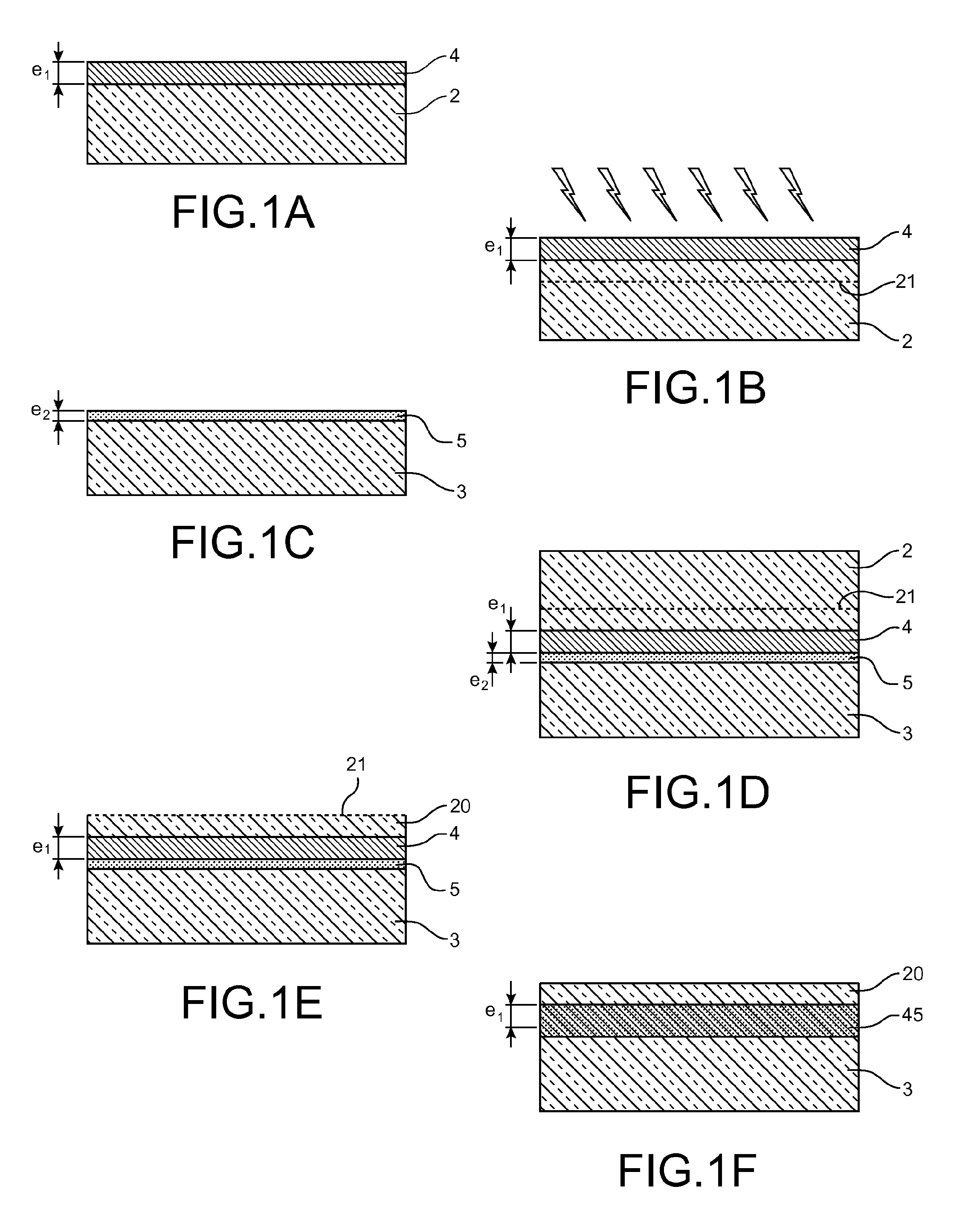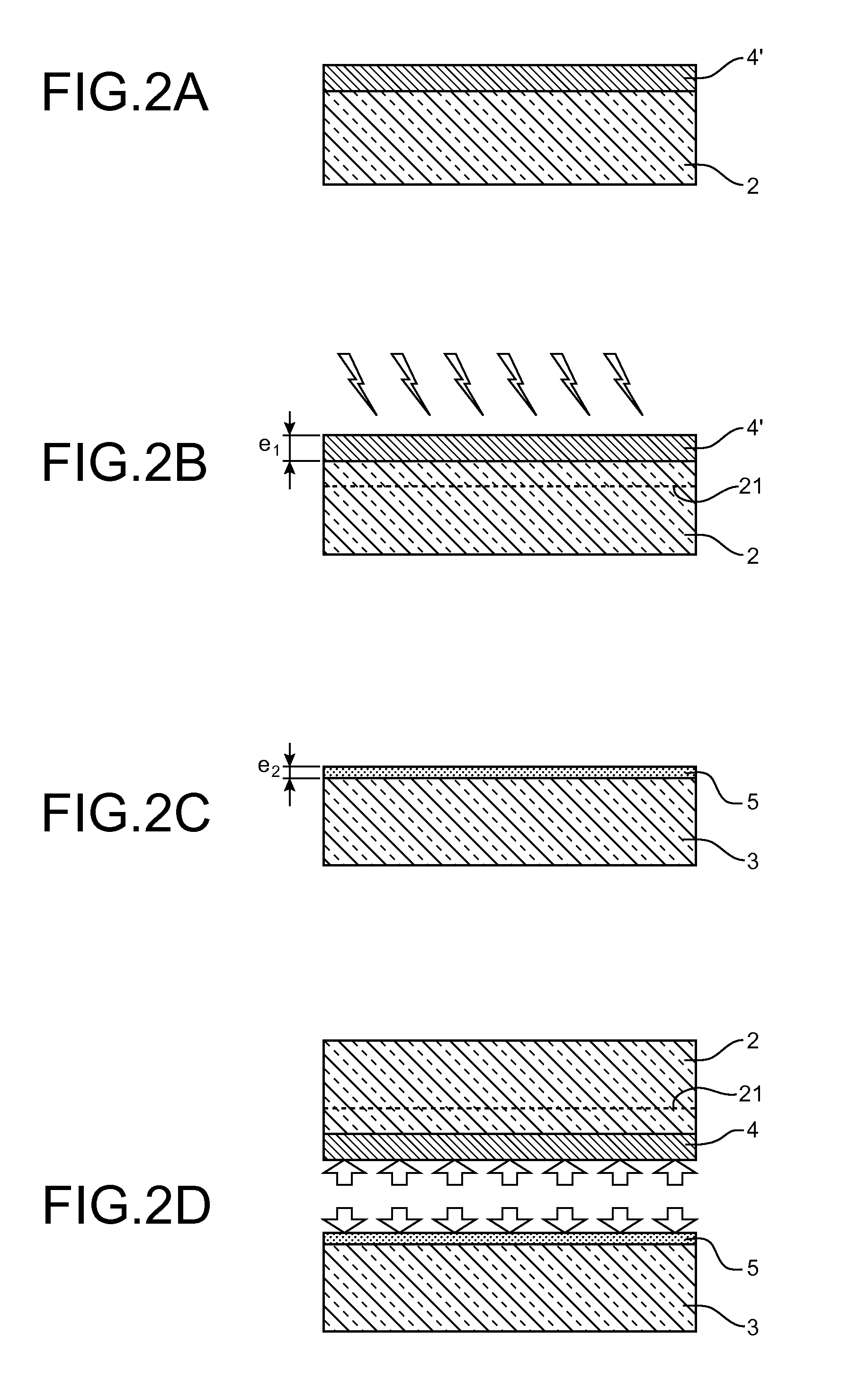Method for producing a stack of semi-conductor thin films
a technology of semi-conductor thin films and stacks, which is applied in the manufacture of semiconductor/solid-state devices, basic electric elements, electric devices, etc., can solve the problems of reducing the dimensions of the oxide layer, forming defects at the bonding interface, and causing the death of the final semi-conductor structur
- Summary
- Abstract
- Description
- Claims
- Application Information
AI Technical Summary
Benefits of technology
Problems solved by technology
Method used
Image
Examples
first embodiment
[0036]FIGS. 1A to 1F represent a method according to the invention.
second embodiment
[0037]FIGS. 2A to 2G represent a method according to the invention, in which thicknesses of oxide higher than the requisite thickness for the final device are formed.
[0038]FIG. 3 illustrates results of defectiveness experiments obtained by the inventors as a function of the ratios of the thicknesses of the oxide layers compared to the final thickness of oxide in the case of SiO2 and silicon substrates.
[0039]FIG. 4 illustrates results of defectiveness experiments as a function of the thickness of the final oxide layer, obtained by the inventors and showing the efficiency of a method according to the invention to create UTBOX structures having a low oxide thickness.
PUM
 Login to View More
Login to View More Abstract
Description
Claims
Application Information
 Login to View More
Login to View More - R&D
- Intellectual Property
- Life Sciences
- Materials
- Tech Scout
- Unparalleled Data Quality
- Higher Quality Content
- 60% Fewer Hallucinations
Browse by: Latest US Patents, China's latest patents, Technical Efficacy Thesaurus, Application Domain, Technology Topic, Popular Technical Reports.
© 2025 PatSnap. All rights reserved.Legal|Privacy policy|Modern Slavery Act Transparency Statement|Sitemap|About US| Contact US: help@patsnap.com



